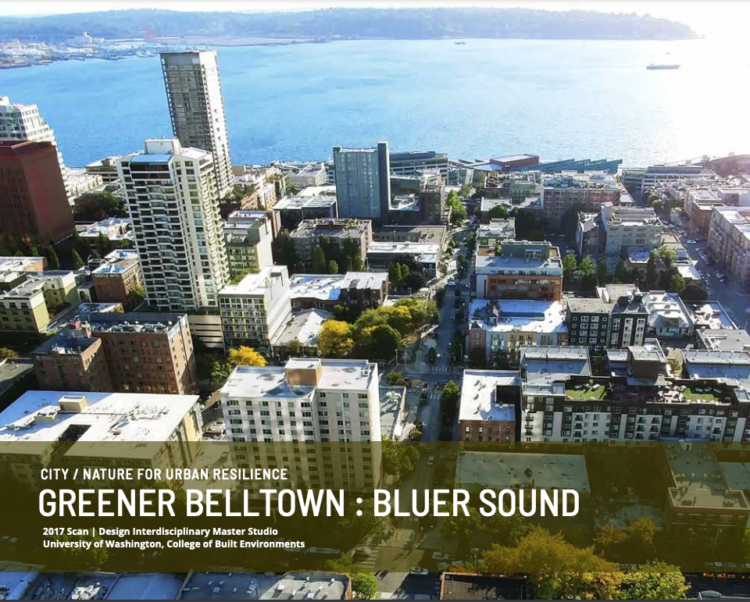
Inspired by our experiences of Copenhagen’s and Malmö’s planning policies and design trials for sustainable and climate resilient cities, the 2017 Scan|Design Master Studio worked with the Seattle 2030 District and the Belltown Community to begin to answer these questions. We explored district planning frameworks that could be useful in integrating these questions into their planning processes. We developed design ideas and typologies to inspire retrofit of streets, urban spaces and buildings that employ natural processes to create a more liveable district, while solving the basin’s stormwater issues and considering future City water and wastewater demands. We had the unique opportunity to work directly with people engaged in ongoing initiatives for Belltown: with a diverse array of community stakeholders and professionals who have been engaged in neighborhood planning processes over past months and years, and with urban habitat and green stormwater proponents; with Seattle Public Utilities at the beginning of their process investigating solutions to the basin’s combined sewer overflows; and with the 2030 District’s visionary goals and progress for reducing peak stormwater discharge and potable water use.
Guided by principles developed by Gehl Architects and Schulze + Grassov, we devised approaches to cultivate and enrich public life — both moving through, and staying in, the public realm of streets, plazas, parks and leftover spaces of the Belltown project area. Additionally, we worked at district, site and detail scales to use urban design to address climate change impacts through:
- exploring opportunities to insert urban nature for biodiversity resilience and human health
- addressing social and cultural needs and amenities to cultivate social resilience
- artfully integrating water into the cityscape for hydraulic performance, urban nature and human delight